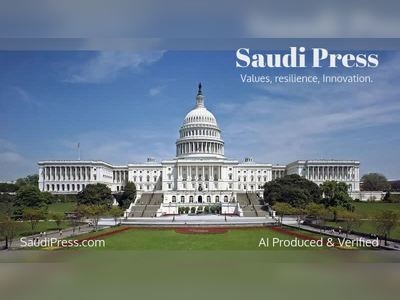
Saudi Arabia Projected to Grow GDP Around 4.5 % by 2027 Amid Strong Non-Oil Expansion
Kingdom’s economy expected to accelerate on robust non-oil growth despite widening fiscal deficit
Saudi Arabia’s economy is forecast to grow by approximately 4.5 % in 2027 as momentum in the non-oil economy gathers pace, according to recent analysis by the Institute of Chartered Accountants in England and Wales (ICAEW).
The body projects a moderation in growth from around 4.5 % in 2025 to 4.3 % in 2026, before expanding again to the 2027 target.
The non-oil sector is singled out as the growth engine, with an expected expansion of 5.0 % in 2026 and 5.3 % year-on-year in 2027. For example, Saudi Arabia’s Purchasing Managers’ Index (PMI) rose to 60.2 in October 2025—its second-highest reading since 2014—signalling strong growth in output, new orders and employment.
Despite this positive trajectory, fiscal pressures are mounting.
The fiscal deficit surged to 88.5 billion Saudi riyals (about US$23.5 billion) in the third quarter of 2025. For the full year 2025 the deficit is forecast at 5.3 % of GDP, widening to 5.6 % in 2026. The ICAEW notes that government spending is unlikely to be significantly curtailed in the near term because of ample sovereign buffers.
Recent reforms underpinning the outlook include eased foreign-investment rules in real estate and equity markets and a five-year rent freeze in Riyadh to curb rental inflation.
Inflation is expected to remain contained at around 2.2 % in 2025.
For comparison, the United Arab Emirates is projected to grow at 5.6 % in 2026, up from 4.9 % in 2025, driven by non-oil sectors such as tourism, trade and financial services.
Non-oil growth in the Gulf Cooperation Council (GCC) is forecast at 4.1 % in 2026, with consumer spending in the region expected to grow by about 3.5 % annually over the next two years, assisted by a unified visa plan and technology-driven diversification.
The data suggest Saudi Arabia is reinforcing its transformation efforts under Vision 2030 by shifting from hydrocarbons toward services, technology and investment-driven growth, while preserving fiscal resilience amid global uncertainties.
The body projects a moderation in growth from around 4.5 % in 2025 to 4.3 % in 2026, before expanding again to the 2027 target.
The non-oil sector is singled out as the growth engine, with an expected expansion of 5.0 % in 2026 and 5.3 % year-on-year in 2027. For example, Saudi Arabia’s Purchasing Managers’ Index (PMI) rose to 60.2 in October 2025—its second-highest reading since 2014—signalling strong growth in output, new orders and employment.
Despite this positive trajectory, fiscal pressures are mounting.
The fiscal deficit surged to 88.5 billion Saudi riyals (about US$23.5 billion) in the third quarter of 2025. For the full year 2025 the deficit is forecast at 5.3 % of GDP, widening to 5.6 % in 2026. The ICAEW notes that government spending is unlikely to be significantly curtailed in the near term because of ample sovereign buffers.
Recent reforms underpinning the outlook include eased foreign-investment rules in real estate and equity markets and a five-year rent freeze in Riyadh to curb rental inflation.
Inflation is expected to remain contained at around 2.2 % in 2025.
For comparison, the United Arab Emirates is projected to grow at 5.6 % in 2026, up from 4.9 % in 2025, driven by non-oil sectors such as tourism, trade and financial services.
Non-oil growth in the Gulf Cooperation Council (GCC) is forecast at 4.1 % in 2026, with consumer spending in the region expected to grow by about 3.5 % annually over the next two years, assisted by a unified visa plan and technology-driven diversification.
The data suggest Saudi Arabia is reinforcing its transformation efforts under Vision 2030 by shifting from hydrocarbons toward services, technology and investment-driven growth, while preserving fiscal resilience amid global uncertainties.





